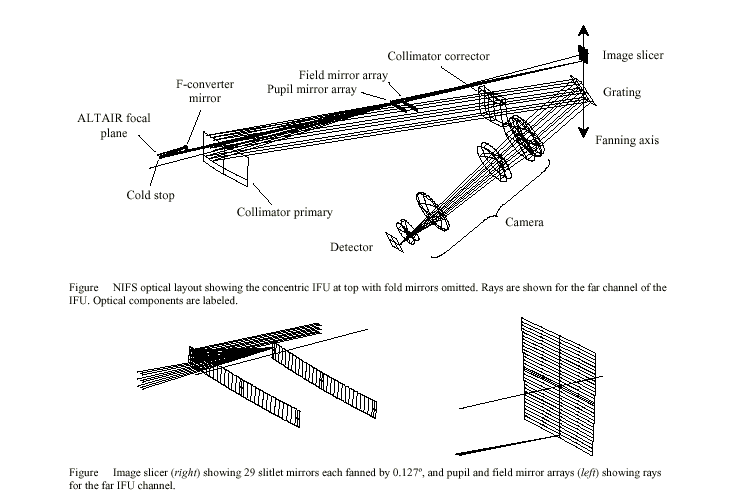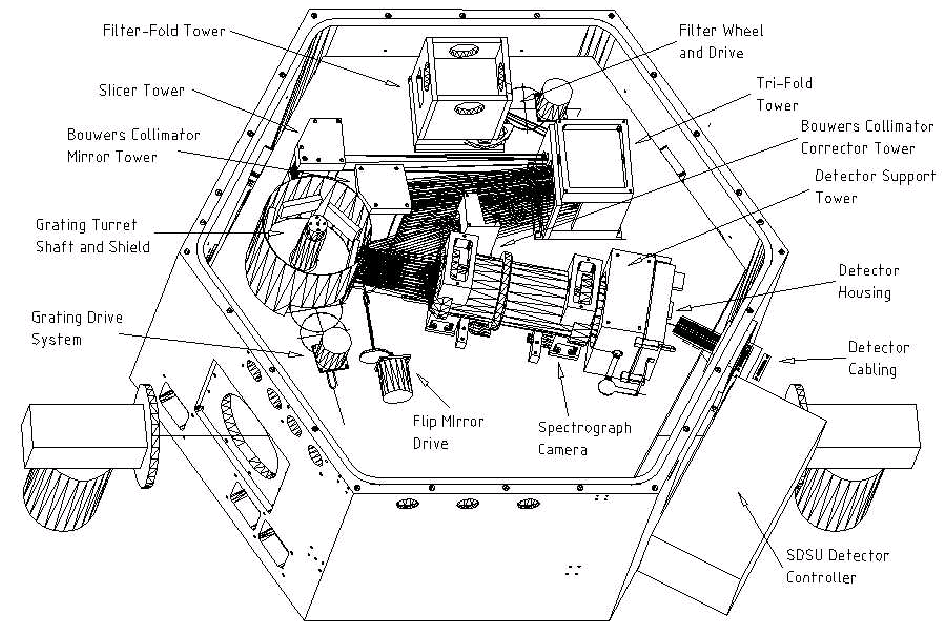
| You are in: Instruments > NIFS > Performance and Use > Components |
 |
NIFS Components |
The optomechanical layout of the NIFS light path:

The NIFS spectrograph optics are shown above. The Gemini facility
adaptive optics system (Altair)
passes a 120" diameter, f/16 field to NIFS and a small pickoff mirror reflects
the central 3."0 x 3."0 field into the spectrograph. The remaining
field not vignetted by this probe passes to the NIFS OIWFS, which monitors
tip-tilt and focus variations. A focal plane mask wheel at the Altair
focal plane baffles the image and allows the insertion of occulting disks.
The NIFS spectrograph uses a concentric IFU to reformat the input focal
plane. The IFU re-images the focal plane at an enlarged scale
onto a concave stack of 29 image slicer mirrors. These mirrors fan
the IFU channels and form pupil images on an array of concave pupil mirrors.
The pupil mirrors re-image the focal plane at a demagnified scale on an
array of fields mirrors where the input field is reformatted as a long
thin slit. The field mirrors feed the Bouwers collimator of the spectrograph,
which consists of a spherical primary mirror and a concentric spherical
meniscus that corrects the aberration of the primary. The essential
feature of the overall configuration is that all the optical surfaces of
the IFU and spectrograph Bouwers collimator are concentric about a fanning
axis through the central image slicer mirror, thus off axis aberrations are eliminated. The geometry of the IFU and the anamorphic magnification
of the grating result in spatial pixels that are rectangular (0."1 x 0."04)
on the sky. The NIFS spectrograph uses a refractive five-element
camera with a focal length of 286mm.
The NIFS spectrograph module is shown below mounted on the cold work surface plate with baffling and the spectrograph cover and skirt removed.
